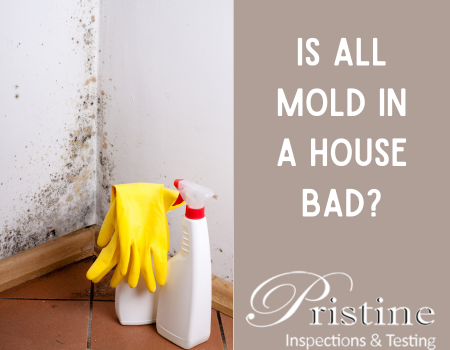Mold is a common concern for homeowners, often evoking images of hidden, harmful spores lurking in the dark corners of their homes. While mold can indeed pose health risks and damage property, not all mold in a house is inherently bad. In fact, some types of mold are relatively harmless, while others can be problematic. To understand whether mold in your house is a cause for concern, it’s essential to distinguish between different types of mold and their potential impact.
Types of Mold:
- Common Household Mold: Many homes have some level of common household mold. These molds are usually non-toxic and not associated with significant health risks. They typically grow in damp or humid environments, like bathrooms and basements. Examples of common household molds include Cladosporium, Penicillium, and Alternaria.
- Allergenic Mold: These molds can cause allergies in some people, but they are not typically harmful to those who are not allergic. Examples of allergenic molds include Aspergillus and Aureobasidium.
- Toxic Mold: This is the category of mold that tends to raise concerns. Stachybotrys chartarum, also known as black mold, is a toxic mold that can produce mycotoxins, which are potentially harmful to humans. Exposure to black mold can lead to respiratory issues, skin rashes, and other health problems.
Is All Mold Bad?
No, not all mold is bad. In fact, mold plays a crucial role in nature, breaking down organic matter. However, when mold begins to grow indoors, it can pose problems for both your health and your home. The key is to distinguish between the types of mold and their potential risks. While common household molds are generally harmless, it’s essential to address any mold growth promptly to prevent it from spreading and potentially becoming problematic.
When Is Mold a Concern?
Mold becomes a concern when it:
- Is Toxic: The presence of toxic molds like black mold should be taken seriously. These molds can release mycotoxins that can harm your health.
- Causes Allergies or Health Issues: If you or your family members are experiencing mold-related health issues, such as respiratory problems or skin rashes, it’s a sign that the mold in your house may be problematic.
- Damages Property: Mold can deteriorate building materials and belongings if left unchecked. It can lead to structural damage and affect indoor air quality.
- Spreads Rapidly: Mold that spreads quickly throughout your home can be challenging to control and may require professional intervention.
Preventing and Addressing Mold Issues:
- Control Moisture: Mold thrives in damp environments. To prevent mold growth, control moisture in your home by fixing leaks, using dehumidifiers, and ensuring proper ventilation.
- Regular Inspections: Periodically inspect your home for signs of mold, especially in areas prone to dampness, such as basements and bathrooms.
- Address Mold Promptly: If you find mold in your home, take action to address it as soon as possible. Clean and remove the affected areas, and fix the source of moisture that allowed the mold to grow.
- Seek Professional Help: For extensive mold problems, particularly those involving toxic molds, it’s advisable to seek assistance from mold remediation experts. They have the knowledge and equipment to handle mold issues safely and effectively.
In conclusion, not all mold in a house is bad, but it’s essential to be aware of the potential risks associated with different types of mold. Common household molds are usually harmless, but toxic mold, allergenic mold, and mold causing health issues or property damage should be addressed promptly. Regular inspections, moisture control, and timely intervention are essential for maintaining a healthy and mold-free home.

